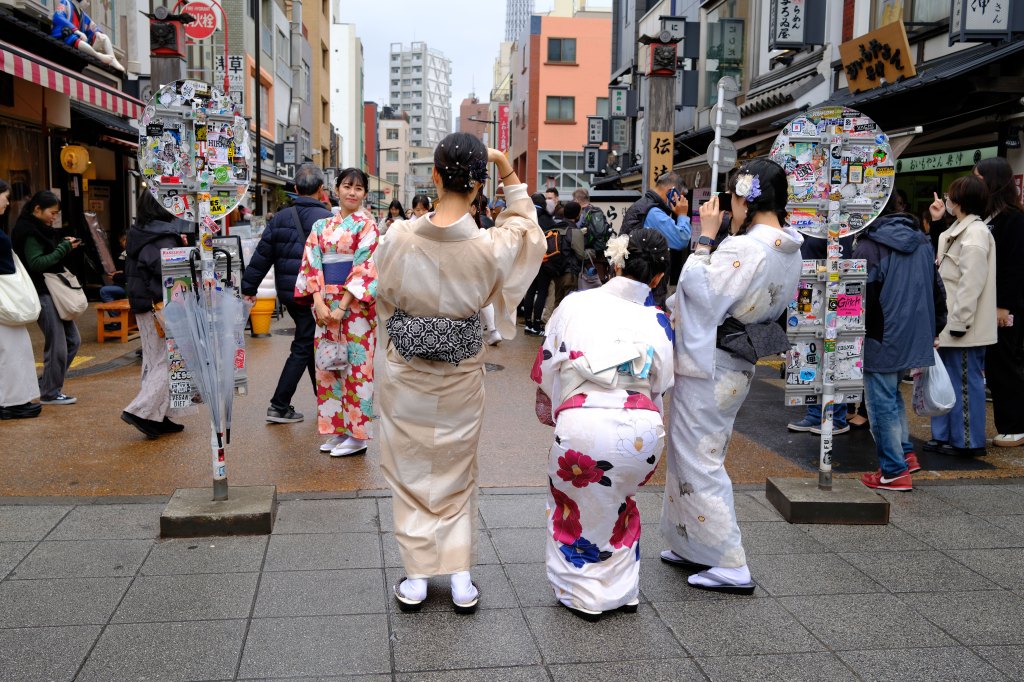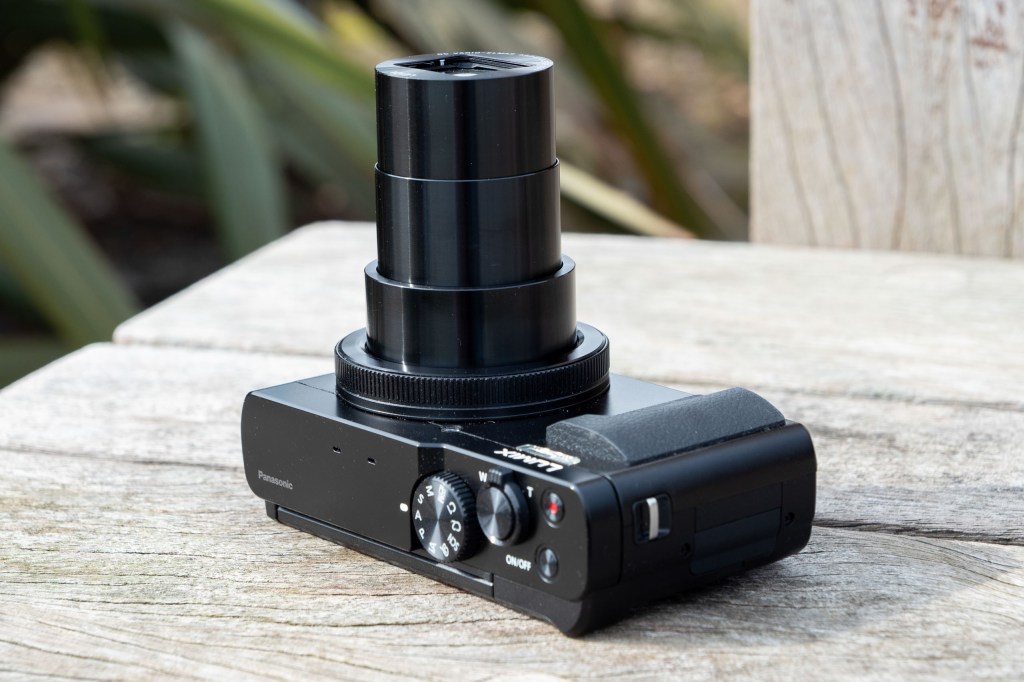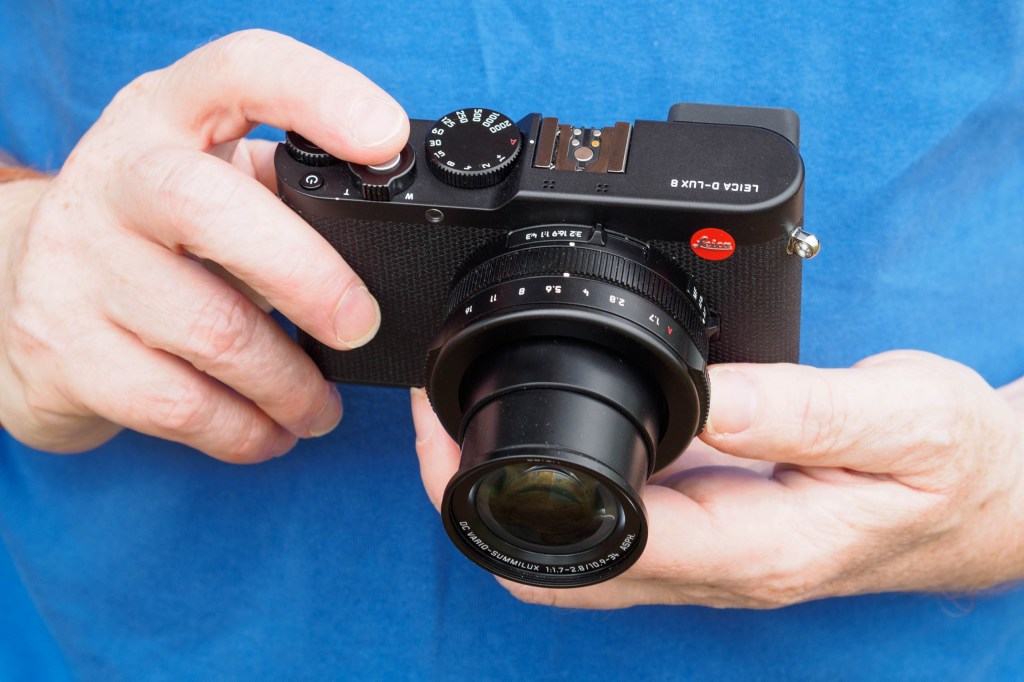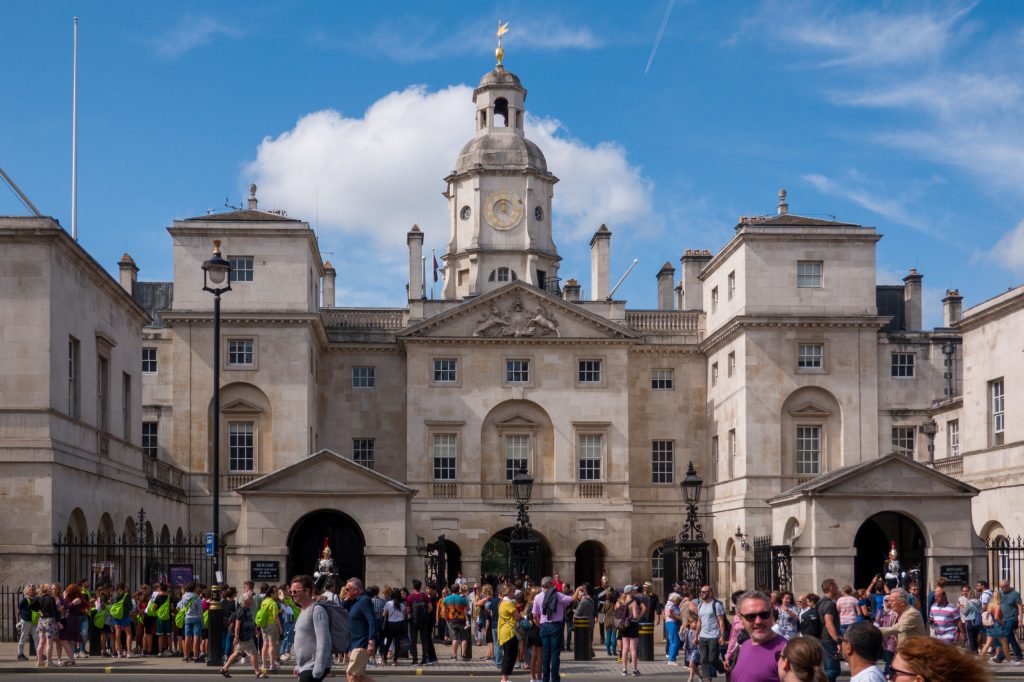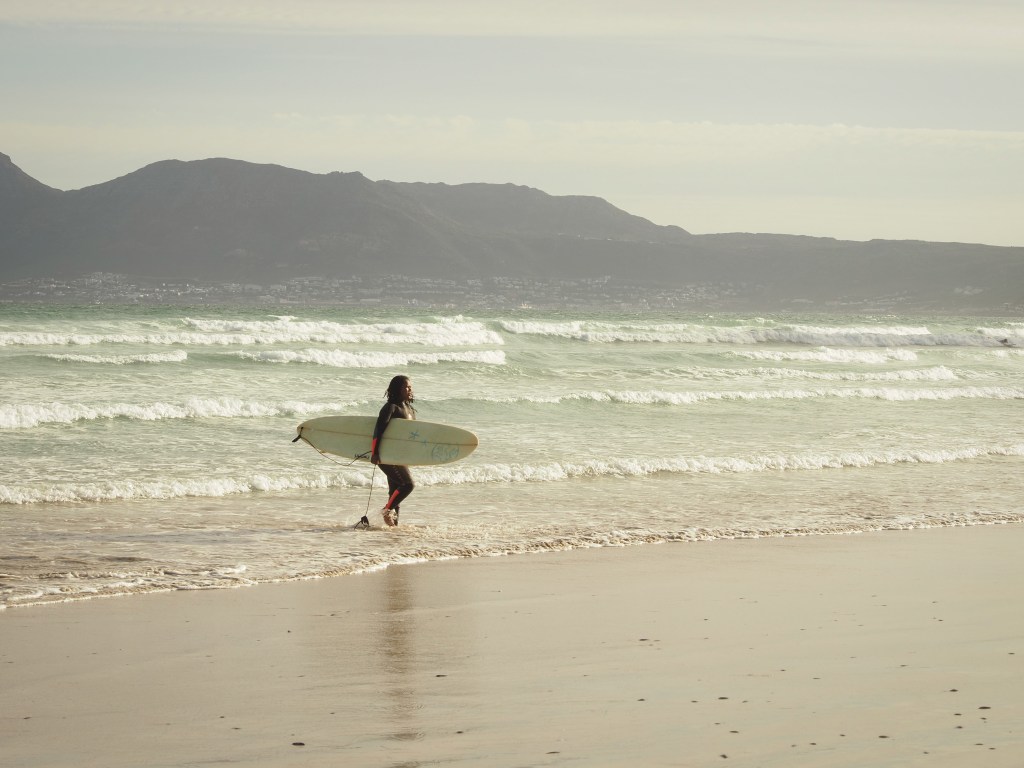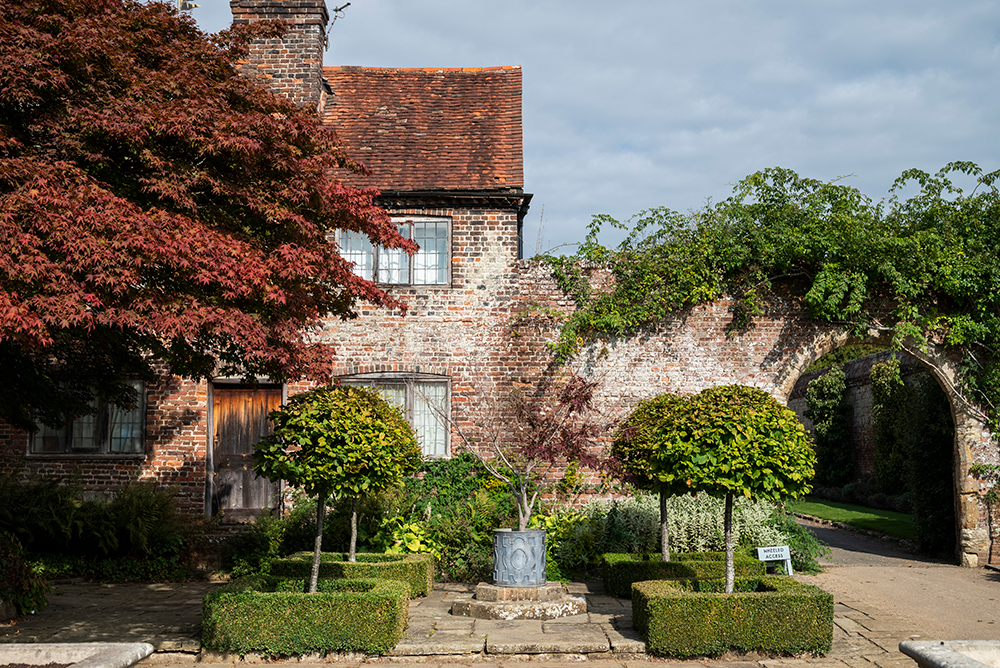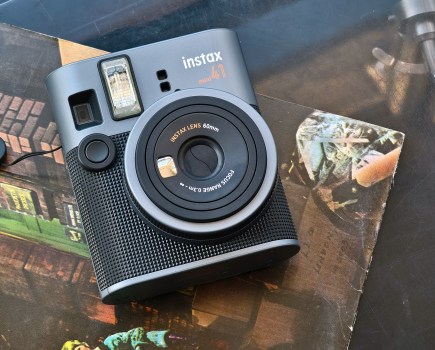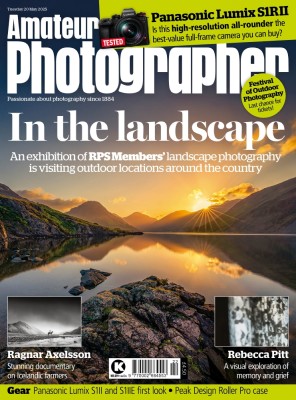In this guide, I’m helping you find the best travel camera for trips, holidays, city-breaks and more. I’ve selected what I think are the best small, light, self-contained cameras for taking on vacation: the cameras that our team of reviewers have nominated as being the best for travel and adventures. While there are plenty of fixed-lens compact cameras on this list, I’ve also included lightweight mirrorless models and affordable DSLRs, to give you plenty of options.
Having been using, testing and reviewing cameras for many years, and covering all the latest releases, the travel camera I will recommend to most people is currently the OM System Tough TG-7. A waterproof compact with an optical zoom lens, it also boasts a number of dedicated shooting modes that are specifically for shooting underwater, which is great for swimming and snorkelling. It doesn’t mind being rained on, dropped or bashed about. Of course, you may want something more photographically sophisticated, or that offers interchangeable lenses, or whatever else – and that’s where the rest of our list comes in.
Travel demands economic planning; not just in what we spend, but in what we take with us. A camera beyond that of your smartphone needs to justify its impact on both budget and space. This is quite a fine line, so I’ve picked cameras that provide just this kind of value – a genuinely great shooting experience, without breaking the bank. Every camera on here has one thing in common – it impressed our reviewing team enough to earn their recommendation. And we’ve plenty of advice for taking better travel images with them.
The best cameras for travel: our quick list
- Best travel camera overall: OM-System Tough TG-7 – Buy now
- Best travel camera for photography: Fujifilm X100VI – Buy now
- Best travel camera with a zoom: Panasonic ZS99 / TZ99 – Buy now
- Best compact mirrorless camera for travel: Fujifilm X-T50 – Buy now
- Best premium travel camera: Leica D-Lux 8 – Buy now
- Best action camera for travel: GoPro Hero 13 Black – Buy now
- Best small travel camera: Sony RX100 VIIA – Buy now
- Best bridge camera for travel: Panasonic Lumix FZ82D – Buy now
- Best DSLR for travel: Nikon D5600 – Buy now (used)
- Best travel camera for video: Fujifilm X-S20 – Buy now
- Best weather-sealed travel camera: Olympus OM-System OM-5 – Buy now
- Best full-frame travel camera: Nikon Z5 – Buy now
Looking for the best deal on cameras for travel? Not only will you find the best travel cameras, but also some of the best deals, as our ‘Buy now’ buttons are setup to automatically take you to the best prices from trusted retailers. You’ll also find a list of other retailers below each camera, so you can find the right deal for you.
Why you can trust Amateur Photographer
We spend many hours testing every product we recommend, in detail, in a variety of situations and shooting scenarios, and only use experts for our reviews, so you can be sure that you’re getting the best products. Find out more about our expert writers.
The best travel cameras and vacation cameras: our full list
Best overall
Best travel camera overall: Olympus / OM System Tough TG-7
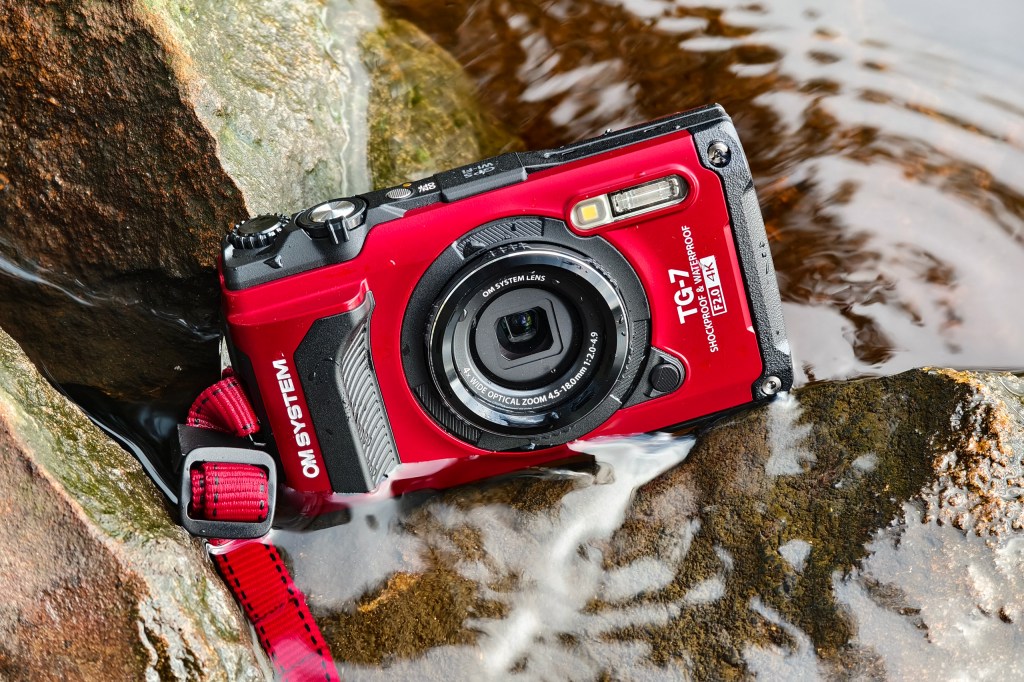
Amateur Photographer verdict
Easy to use, with point-and-shoot operability, but also tough and capable of taking great pictures, the TG-7 is the travel camera I would recommend to most people.- Supremely rugged build
- F2.0 4x optical zoom lens
- GPS, Wi-Fi, Bluetooth built-in
- Impressive macro performance
- Raw shooting available
- Small sensor
- Price increase
At a glance
- Price: $500 / £499
- 4x optical zoom lens, f/2.0-4.9, 24-100mm equivalent
- 12MP 1/2.33inch BSI CMOS Sensor
- ISO 100-12,800
- 4K 30/25fps video recording
- 3in, 1.04m-dot screen
- In-body image stabilisation (CMOS shift, up to 2.5stops)
Waterproof tough cameras tend to be very popular for travel, as they can be used on the beach and in the sea without fear of them getting damaged. For my money, the best waterproof compact you can get is the OM System Tough TG-7, a capable little shooter with a useful zoom lens and the ability to take a beating.
Key to its attraction is its sheer robustness. The TG-7 is waterproof to 15m, shockproof to a drop from 2.1m, freezeproof to -10°C, and crushproof. It also boasts impressive close-up capability and an extensive range of underwater modes, plus an extensive range of lighting and lens accessories. While the sensor is a 1/2.3-inch type, meaning its quality is inferior to other cameras on this list, the TG-7 still dependably produces punchy images, particularly in bright conditions.
For outdoor adventurers, it also includes a suite of environmental sensors that allow you to keep track of your travels, including GPS with a compass, a thermometer and an accelerometer.
Read our full review of the Olympus Tough TG-7.
Take a look at other waterproof and underwater camera options here: Best Waterproof and Underwater Cameras
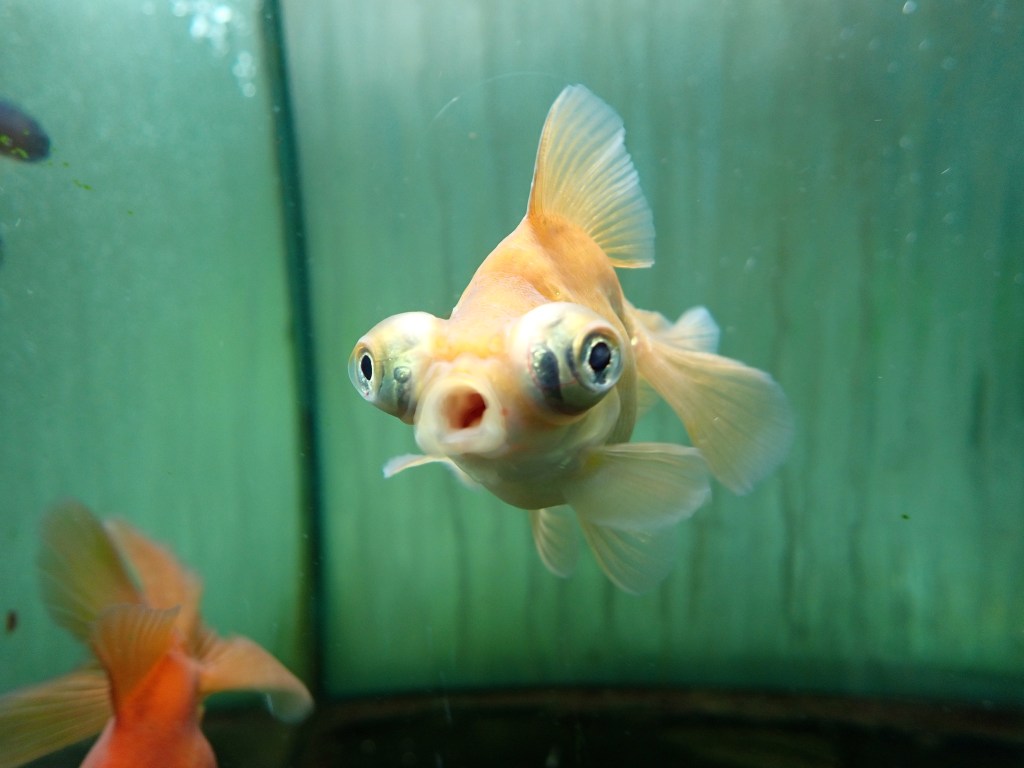
Best for photos
Best travel camera for photography: Fujifilm X100VI
Amateur Photographer verdict
The Fujifilm X100VI was an update to the popular X100V in many useful ways, with a new 40MP sensor, in-body image stabilisation, and improved AF. This camera deserves its early success.- In-body image stabilisation
- Detailed crisp images
- Unique design and handling
- One-of-a-kind viewfinder
- 6.2K video recording
- Fixed lens will not be for everyone
- Full weather-sealing costs extra
At a glance:
- $1,599 / £1,599
- 35mm equivalent f/2 lens
- 40.2MP APS-C X-Trans CMOS 5 HR sensor
- ISO 125-12,800 (standard), ISO 64-51,200 (extended)
- 11fps (mechanical shutter); 20fps with electronic shutter and 1.29x crop
- Hybrid optical/electronic viewfinder
- 3.2in, 1.62m-dot tilting touchscreen
- In-Body Image Stabilisation – 6 stops (5-axis)
Among all the cameras covered in this article, the Fujifilm X100VI is unique, as it’s the only one with a fixed, single-focal-length lens. Usually, for travel we presume photographers will prefer a zoom, ideally with an extended range to cover a broad array of subjects. But the X100VI is different.
With its APS-C sensor, fixed 35mm equivalent lens, and classic rangefinder-like styling, it embraces a different way of shooting. It’s all about working with a fixed angle of view, and ‘zooming with your feet’ to find your pictures. It’s not for everyone, but for some photographers, it’ll be perfect. I love using cameras with fixed focal lengths like the X100 – it forces me to think and stay engaged, and makes me a more active photographer. I think this mode of shooting lends itself more to city-breaks than nature hikes or sweeping vistas, so it may or may not be suitable for the kind of travels you’re planning.
While the X100VI looks very much like the previous four models in the Fujifilm X100 series, it brings some significant improvements, most noteworthy probably the increased sensor size from 20MP to 40 MP and 5-axis in-body image stabilisation. Another useful addition is subject recognition autofocus and tracking, with birds, planes, and automobiles all being detected. There’s also human face and eye detection, but unfortunately, this option is a bit hidden under a different menu setting. Fujifilm continued with the tilting rear screen first seen in the Fujifilm X100V, which is great for discreet, unobtrusive shooting.
Thankfully these upgrades don’t come at the detriment of the camera’s other major attractions, which include analogue dials for shutter speed, ISO, aperture and exposure compensation, and Fujifilm’s unique hybrid viewfinder that gives a choice of optical or electronic viewing.
Despite its old-fashioned good looks, the X100VI is packed full of up-to-date features. It’s capable of 11fps shooting, but this can be beefed up to 20fps with the electronic shutter even though applying a 1.29x crop. It also benefits from Fujifilm’s superb colour rendition, with a full array of Film Simulation modes on board to provide a variety of different looks.
And for those who really can’t do without a few different lenses, optional wide angle and teleconverters are available, giving 28mm and 50mm equivalent views.
Read our full review of the Fujifilm X100VI.
Best travel camera with a zoom: Panasonic Lumix ZS99 / TZ99
Amateur Photographer verdict
If you want a long-zoom compact that will fit in your pocket, then this is a great option. Just be aware that it lacks a viewfinder.- 30x optical zoom
- Front facing touchscreen
- In-camera USB-C charging
- Poor low light performance
- No viewfinder
At a glance
- Price as reviewed: $497/£469
- 20.3MP 1/2.3-inch MOS sensor
- 24-720mm f/3.3-6.4 (35mm) equivalent 30x zoom LEICA DC Vario-Elmar lens
- USB-C in-camera charging
- 3-inch, 1840k-dot, touch-sensitive TFT LCD
Of course, there are many benefits to having a long zoom lens for travel, and if the restrictive style of shooting on the X100VI is not for you, then a superzoom compact may be the way to go. The ZS99 / TZ99 is a very versatile pocket-sized superzoom, with a lens that provides an impressive 30x optical zoom (that’s equivalent to 24-720mm) this focal length already got you covered for most scenarios from wide landscapes or street scenes to more fine picked details.
The Lumix TZ99 doesn’t have a viewfinder, instead, you need to compose using the 3-inch TFT LCD touchscreen. It has a good size and is reasonably bright, but in very sunny conditions you might struggle to see it properly. Otherwise, it handles nicely with its rubber grip on the front and relatively small size. It’s the kind of camera that delivers great quality under optical conditions, but it can struggle to hold onto detail when the light gets low, as our reviewer discovered. Though it’s even possible to get some shallow depth-of-field effects with the telephoto lens, putting portrait-style shots in play.
You can record video at 4K 30fps for up to 90 minutes and use it for vlogging thanks to the front-facing articulating screen. With the 4K photo option, you can pull stills from a video footage, this is particularly useful for fast-moving subjects like pets and children.
Read our full review of the Panasonic Lumix ZS99 / TZ99.

Best compact mirrorless
Best compact mirrorless camera for travel: Fujifilm X-T50

Amateur Photographer verdict
The Fujifilm X-T50 raises the game in several ways, but ultimately it boils down to this: you won’t find a better APS-C camera at this price. Read on!- 40MP sensor and processor from XT5
- New film simulation and dial
- Great new 16-50mm lens
- Impressive image quality
- 2-way tilting screen not ideal for video
- Some may prefer a drive mode dial
- Auto subject detection AF would be nice
At a glance:
- 40.2MP APS-C X-Trans sensor
- ISO 125-12,800 (standard)
- 8fps shooting (20fps electronic shutter / 1.3x crop)
- 2.36m-dot, 0.62x electronic viewfinder
- 3in, 1.84m-dot tilting touchscreen
- 6K 30p, 4K 60p, Full HD 240p video
- In-body image stabilisation, up to 7 stops
- Available in silver, black, or charcoal grey
The latest model in Fujifilm entry level double-digit X-T series is packed with flagship features at a more affordable price. With a 40MP sensor it offers higher resolution than rival APS-C models and also shoots 6K30p video. In addition to the bigger sensor, for the first time in the lineup, the X-T50 includes in-body image stabilisation, and with 7-stops it is a very capable one, not to mentioned they managed to fit it in a very streamlined body.
Subject detection autofocus is on board too, in auto mode it’ll recognise and track people, animals and vehicles, whereas in other modes you need to manually select the subject.
With a compact and traditional SLR-styled body, the X-T50 handles exceptionally well, you’ll find a dedicated dial to Fujifilm’s famous Film Simulation modes and the other tactile analogue controls for shutter speed and exposure compensation. As for aperture, most of the Fujifilm lenses have aperture rings.
Best premium
Best premium camera for travel: Leica D-Lux 8
Amateur Photographer verdict
Traditional control dials, and a multi aspect ratio sensor make the D-Lux 8 a joy to use and create with. Its JPEGs can be dull; best results are obtained from raw.- Large aperture zoom lens
- Engaging manual controls
- Much improved viewfinder over D-Lux 7
- Unique multi-aspect ratio sensor
- Minimal handgrip
- Fixed, instead of tilting rear screen
- Uninspiring JPEG colour
At a glance:
- $1,595 / £1,450
- 24-75mm equivalent f/1.7-2.8 lens with OIS
- 17MP Four Thirds multi aspect-ratio sensor
- ISO 100-25,000
- Up to 11fps shooting
- 2.36m-dot, 0.74x OLED viewfinder
- 3in, 1.84m-dot LCD touchscreen 4K 30p video recording
If you’ve got a bit more budget to spend, I can definitely recommend the Leica D-Lux 8. It’s not dissimilar to the X100VI in terms of handling, only with a zoom lens that provides a good level of compositional flexibility. When I reviewed it, I loved having the ability to change aspect ratios via a switch on the lens. It isn’t described as weatherproof, but I used it in a couple of light showers.
Leica have employed a smaller Four Thirds type sensor with a clever multi-aspect ratio design, joined by a 24-75mm equivalent zoom with a bright f/1.7-2.8 aperture. It’s in much the same price bracket as the X100VI, at $1,595 / £1,450 vs $1,599 / £1,600. It has traditional photographer-friendly controls for the main exposure settings, and a corner-mounted viewfinder in a flat-bodied ‘rangefinder-style’ design – these make it a joyous thing to use.
Its 20MP Four Thirds sensor is used in a unique way. It never uses the entire sensor area to create images, but instead crops in to offer a range of aspect ratios with the same diagonal angle of view.
Continuous shooting is available at 11 frames per second, but this comes with focus fixed and in 10-bit raw, which limits post-processing flexibility. Drop the speed to 7fps, and you get live view between frames. At 2fps, the camera offers continuous autofocus and 12-bit raw output.
Read our full review for more.

Best action camera
Best action camera for travel: GoPro Hero 13 Black

Amateur Photographer verdict
Action cameras are brilliant for travel, with tiny dimensions and impressive image quality. You can’t go wrong with a GoPro.- Loads of video recording options
- Has built-in GPS
- Large mount and accessory ecosystem
- Waterproof and can take a beating
- Extra lenses are costly
- Low light quality still struggles
At a glance:
- $399 / £399
- HDR (High Dynamic Range) Video + Photo
- Bluetooth audio support
- 5.3K 120p, 4K 120p and 900p at 360fps video
- 10% larger battery
- Faster WiFi 6 technology
- Waterproof to 33ft
- HLG HDR video and LUT support
With a tiny, pocket-sized form factor, and the ability to record video that’s good enough for professional productions, the GoPro Hero 13 Black is very much the action camera to beat. Action cameras are quite specialised – I wouldn’t recommend them to all travel photographers and videographers. But if your holidays typically involve daring feats like bungee jumps or surfing sessions, and you want to capture it all as vividly as possible, getting a GoPro is a no-brainer.
Capable of capturing 5.3K video with a range of flexible options, the Hero 13 Black is a camera that very much punches above its weight. Stills-wise it’s also no slouch, capturing imagery with vivid colours and plenty of detail, but video is really its primary raison d’être.
Over the many years it has been producing action camera, GoPro has built up a formidable ecosystem of accessories and mounts – whether you want to mount the Hero 13 Black to your chest, helmet, handlebars or dog, you’re covered.
We’ve also seen a few tempting price reductions that make the case even more strongly for the GoPro Hero 13 Black. If you like, you can also customise it with optional lens modules that transform the camera’s perspective, though these will all cost you extra, and I’m not sure if most users really need them, given that the baseline GoPro experience is so good.
Best small camera
Best small camera for travel: Sony RX100 VII / VIIA

Amateur Photographer verdict
A phenomenally capable pocket camera for those who can afford it and live with its flaws – incredible tech in a flawed body design at an eye-watering price.- Class-leading autofocus
- Pocketable form factor
- Great viewfinder and screen
- Still very pricey
- RX100 VI will do most of the same stuff for less money
At a glance:
- New price $1,298 / £1,049
- 24-200mm equivalent f/2.8-4.5 lens
- 20MP 1in sensor
- 20fps continuous shooting
- 2.36m-dot pop-up EVF
- 3in, 921k-dot tilting touchscreen
Sony’s RX100-series compact cameras are famed for the way they fit an awful lot of technology into a small, pocketable package. The latest model in the range exemplifies this, with a 24-200mm equivalent f/2.8-4.5 zoom, a 20MP 1-inch stacked CMOS sensor, a pop-up electronic viewfinder and a tilting rear screen, all in a body that’ll slip neatly into a jacket pocket.
What’s more, it’ll shoot at 20 frames per second and record 4K video. Compared to its predecessor, it gains an upgraded sensor that enables Sony’s AI-based tracking autofocus, along with a socket for an external microphone and a few interface improvements. Otherwise, the older RX100 VI offers most of the same features for slightly less money.
With 357 phase-detection AF points covering 68% of the frame and Sony’s Real-time Eye AF and Real-time Tracking on board, the RX100 VII has the most sophisticated autofocus of any compact camera. Set it to continuous focus and tracking, and you can almost forget about having to move the AF area or change focus modes ever again. This is very welcome, as in many respects the camera’s ambitious feature set has rather outgrown its simple control layout.
One area where the RX100 VII excels lies with composing your images, thanks its large pop-up viewfinder and tilting rear screen. The lens is a strong performer too, especially when stopped down. Crucially, the camera delivers attractive images which are a noticeable improvement over older Sony models in terms of colour rendition. Also, note that it’s referred to as the RX100 VIIA in some territories – this was a minor reskin to get around EU regulations to do with USB-C charging; it’s the same camera on the inside.
Read our Sony RX100 VII review.
Best bridge
Best bridge camera for travel: Panasonic Lumix FZ80D / FZ82D
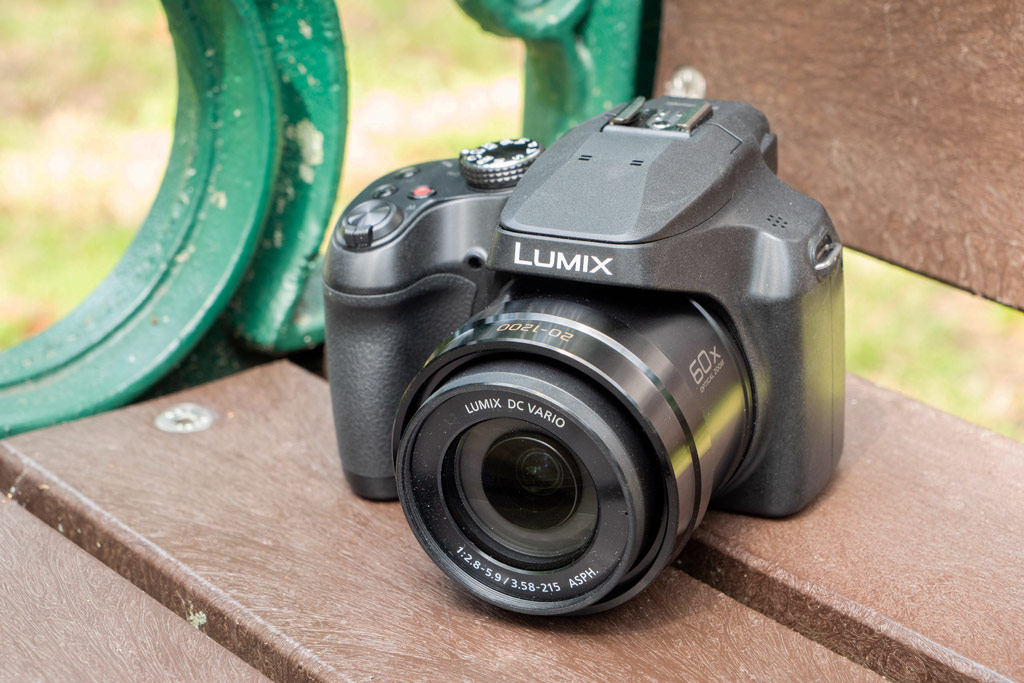
Amateur Photographer verdict
Its huge zoom range will cover almost any subject, from wide cityscapes to close-ups, and it’s highly affordable too – though image quality is good rather than great.- Generous built-in zoom range
- Decent electronic viewfinder
- Very affordable price tag
- Unexceptional image quality
- No Wi-Fi
At a glance:
- $479 (FZ80D, US) £429 (FZ82D, UK/Europe)
- 18.1MP 1/2.3-inch MOS Sensor
- 20-1200mm equivalent f/2.8-f/5.9 lens (60x optical zoom), OIS
- USB-C in-camera charging
- 4K/30p Video
- 4K Photo
- 3-inch 1840k-dot fixed touchscreen
- 0.39-inch OLED LVF 2360k-dots
Bridge cameras combine long zoom lenses with SLR-styled handling, in a body that typically costs significantly less than an equivalent setup would cost in an interchangeable-lens system. The Panasonic Lumix FZ80D / FZ82D (the name changes depending on where you are; hereafter I’ll call it the FZ80D for simplicity) is a fairly typical example of the form, sporting a 20-1200mm equivalent f/2.8-f/5.9 lens and an 18MP 1/2.3-inch MOS sensor. At a tempting price of $479 / £429, it’s a solid and inexpensive option for travel.
Image quality from the FZ80D is certainly nothing special – you’re not going to get amazing results from a sensor that small. However, the real selling point of a camera like this is that enormous lens, and it does indeed offer tremendous versatility – you can get useable images of subjects from a tremendous distance, then zoom all the way out to get a wide-environmental shot.
In these days of better-than-ever smartphone quality, I’d only really recommend bridge cameras to those who are really going to make use of those long focal lengths. It’s only at the outer edge of the zoom lens that you’ll get shots substantially better than what your phone could achieve at the same distance. Though on the other hand, the FZ80D is quite a bit cheaper than a modern smartphone.
Read our full Panasonic Lumix FZ80D review

Best DSLR
Best DSLR for travel: Nikon D5600
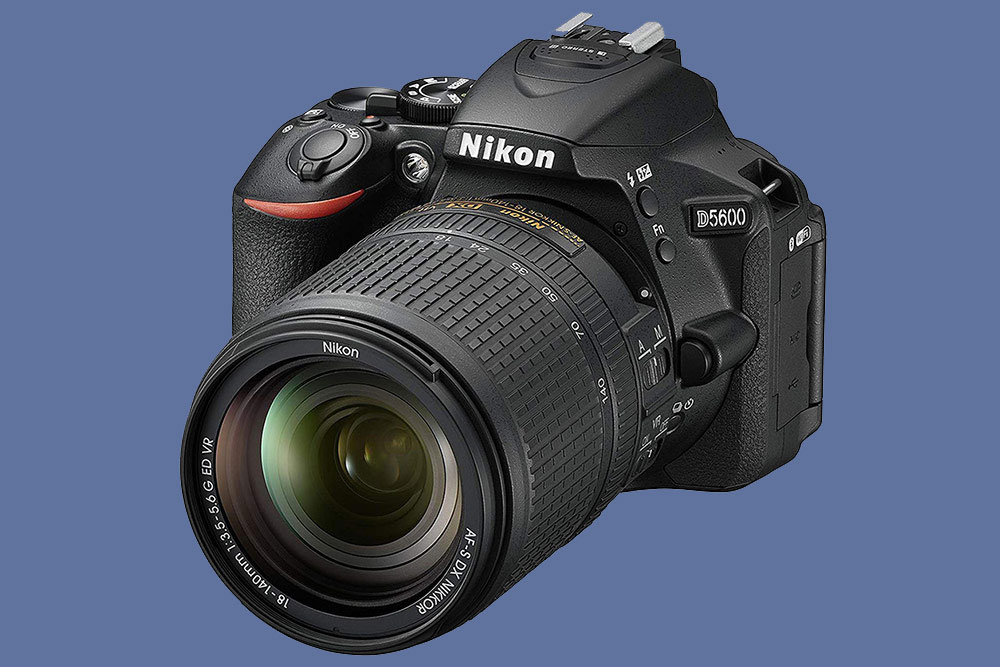
Amateur Photographer verdict
Apart from being a great entry level DSLR the D5600 takes beautiful photos, and you can get a heck of a lot from it if you stick with it and invest in additional lenses- Solid DSLR handling
- Good connectivity features
- Well-priced
- Middling video spec
- Touchscreen cannot be disabled
At a glance:
- from $600 (used) / £400
- 24.2MP APS-C sensor
- ISO 100-25,600
- 5fps continuous shooting
- Optical pentamirror viewfinder
- 3.2in, 1.4m-dot fully articulated touchscreen
Some photographers still prefer a traditional DSLR with an optical viewfinder, and Nikon’s D5600 provides a solid specification in a portable package. What’s more, it can be bought in a kit with a versatile 18-140mm kit zoom, offering a 27-210mm equivalent range. There’s icing on the cake too, as Nikon’s SnapBridge connectivity can transfer all your pictures automatically to your smartphone, making sharing your adventures a breeze.
In terms of key features, the Nikon D5600 boasts a reasonably solid specification. Its 24.2MP sensor goes up to ISO 25,600 and supports continuous shooting at 5fps. Autofocus employs a 39-point phase-detection system covering the central region of the frame, while metering is handled by a 2,016-pixel RGB sensor.
One area where the D5600 shows its age, though, is with regards to video recording, which is Full HD only, rather than 4K. Recent mirrorless models undoubtedly offer more, but on the other hand, they can’t match the D5600’s impressive 820-shot battery life.
In general the D5600 delivers attractive images, with warm, saturated colours and plenty of detail. It handles nicely too, with the responsive touchscreen making up for a relatively simple set of external controls. Those who’d like to add extra lenses are well served by Nikon’s sizeable F-mount range, including the affordable AF-P DX-Nikkor 10-20mm f/4.5-5.6G VR wideangle zoom and the AF-S DX-Nikkor 35mm f/1.8 G. The latter would nicely complement the zoom for low-light shooting. See our guide to the best Nikon F-mount lenses for more ideas.
Read our original review of the Nikon D5600
Best for video
Best travel camera for video: Fujifilm X-S20

Amateur Photographer verdict
The X-S20 is exceptional image quality and advanced video features make it a great chice for stills shooters and vloggers alike- Great image quality
- Advanced AI subject-detection AF system
- Advanced video options
- Excellent battery life
- Pricey
- Small electronic viewfinder and eyecup
At a glance:
- $1,299 / £1,129
- 26.1MP sensor
- 30 fps shooting
- Upto 6.2K/30P video, up to 360Mbps
- 1.84m-dot vari-angle touch-screen
- AI-based autofocus
For enthusiast photographers who’d like a small, lightweight camera that handles well and offers excellent image quality, the Fujifilm X-S20 is extremely appealing. Styled to look and work very much like a shrunken DSLR, it offers most of the features of the firm’s flagship the Fujifilm X-T5 in a considerably smaller body.
Based on Fujifilm’s unique 26MP X-Trans CMOS sensor, the X-S20 delivers the firm’s signature attractive JPEG colour rendition. It even has a dedicated dial to select between the various Film Simulation modes, which provide an interesting range of different looks. Other highlights include 5-axis in-body stabilisation that works with every lens, and a fully articulated screen for shooting at unusual angles.
When it comes to video, 6.2K video recording is available at up to 30 frames per second. The new Vlog mode is designed for recording yourself, as well as giving quick on-screen access to product priority focus, as well as a background defocus mode, face/eye detection, self-timer, IS mode, and high-speed mode.
With its prominent handgrip, twin control dials and joystick for positioning the focus area, the X-S20 provides the kind of handling that should satisfy experienced photographers. Fujifilm also makes the best available range of lenses for the APS-C format, including a nice set of compact primes.
What’s more, the major third-party lens makers have also recently started to support the firm’s X mount, with some interesting optics now available from Samyang, Sigma, and Tamron. This makes the X-S20 a great choice for existing DSLR users looking for a smaller camera.
Read our full review of the Fujifilm X-S20.
Best weather-sealed
Best weather-sealed travel camera: OM System OM-5 with 12-45 F4 PRO lens

Amateur Photographer verdict
With an unmatched lens range, we love this versatile and impressive camera which produces great quality photos at very good prices. Capable of good video too.- Excellent lens range
- Added advanced photo features
- Improved image stabilisation
- Excellent JPEG output with exceptionally pleasing colour
- IP53 weather-sealed
- Video features updated
- Lacks updated menus
- Short buffer for 30fps shooting
- MicroUSB rather than USB-C
- No joystick control
At a glance:
- $1,299 / £1,299
- 20.4MP Four Thirds sensor
- ISO 200-6400 (extended: L64-25600)
- 30fps shooting
- 4K 30p video
- 2.36m-dot EVF
- 3inch, 1.04m-dot vari-angle LCD
Olympus cameras have traditionally offered high performance in a compact form factor, something continued through the brand’s reinvention as OM System, and the OM System OM-5 series delivers on this principle particularly well. It’s extremely small and lightweight, while still having a fully weather-sealed body and a good set of external controls. What’s more, you don’t have to spend a huge amount of money to get a matching sealed lens.
With improved image stabilisation, as well as a number of features inherited from the Olympus OM-D E-M1 Mark III / OM System OM-1, including Starry Sky AF (for astrophotography), built-in LiveND (up to ND16), and other video updates, this is an extremely versatile choice for travel photography.
Its 20MP sensor includes on-chip phase detection that provides 121 focus points spread across the entire image area. You get 10 frames per second shooting, a decently large viewfinder, and a fully articulated screen. The camera also produces very attractive JPEG images, with well-judged exposure and white balance that complements the firm’s signature punchy colour reproduction.
Micro Four Thirds models inevitably give more visible image noise at high ISOs, but this can often be offset by the superb 5-axis in-body image stabilisation, as it allows you to shoot handheld at remarkably slow shutter speeds. There’s also a good range of affordable f/1.8 prime lenses available for low-light shooting that’ll take up next to no space in your bag. There is also a good choice of lenses.
Read our original review of the OM System OM-5
Best full-frame
Best full-frame camera for travel: Nikon Z5 + 24-200mm f/4-6.3 lens
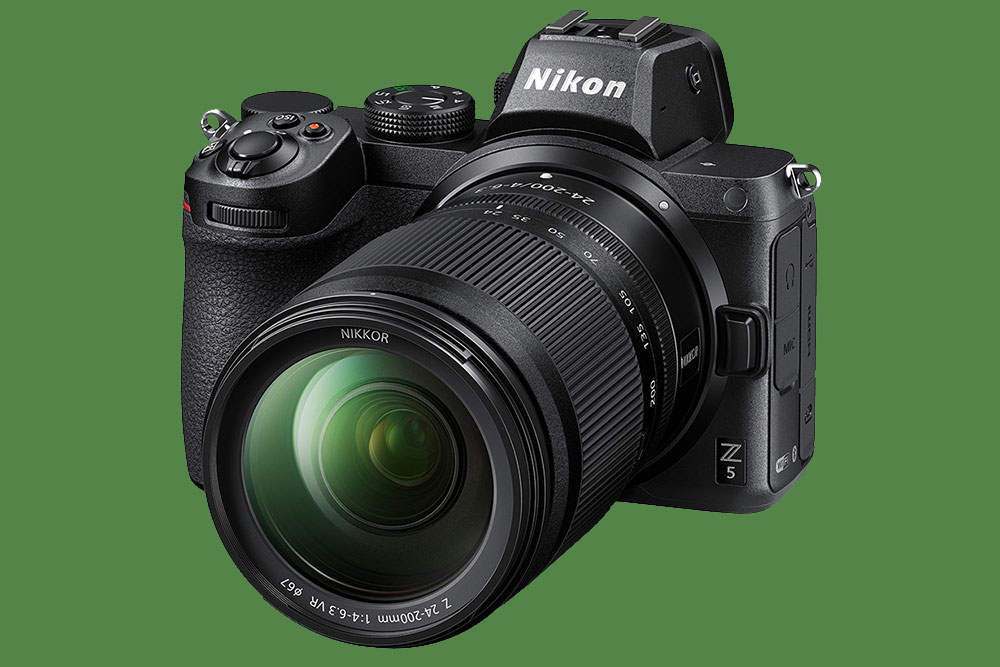
Amateur Photographer verdict
Far more advanced than its “entry level” billing – and still a capable, reliable full-frame camera of quality feel, decent specs, and ever-expanding range of good lenses. Fantastic at its price point.- Satisfying controls and handling
- Does well in low light
- Gorgeous full-frame images
- Pedestrian burst rate
- Vicious crop into 4K video
At a glance:
- $2,097 / £1,499
- 24.3MP full-frame sensor
- ISO 160-51,200
- 4.5fps continuous shooting
- 3.69m-dot viewfinder
- 3.2in, 1.04m-dot tilting touchscreen
If you really can’t do without full frame, the latest mirrorless models are ideal for travel, as they’re smaller and lighter than their DSLR counterparts. It’s also possible to get all-in-one superzoom lenses for them that deliver very creditable results. We’ve chosen the Nikon Z5, as it’s available in a kit with the firm’s Z Nikkor 24-200mm f/4-6.3 VR for a decent discount over buying the two separately.
The lens has a slightly shorter zoom range than its Canon and Sony counterparts, but provides a welcome weight reduction in return, of about 200g. While the Z 5 counts as Nikon’s ‘entry-level’ full-frame mirrorless body, it doesn’t give up a huge amount compared to the more expensive Nikon Z6.
Its 24MP sensor resolves just as much detail in good light, and while it falls behind in terms of noise performance at the highest sensitivities, it’s still perfectly usable at ISO 12,800. However, its maximum shooting speed of 4.5fps looks rather pedestrian by today’s standards, meaning it’s not the best choice for fast action or wildlife. It’s also only able to record 4K video with a significant 1.7x crop.
In other respects, though, the Z5 maintains most of what makes Nikon’s mirrorless cameras so attractive. The body may be small, but it has plenty of external controls, along with a lovely large viewfinder and a tilting touchscreen. Dual SD card slots offer the option of backing up your images for peace of mind, while in-body IS means you can often do without a tripod. A range of fine fast primes is also available for low-light shooting.
Read our original review of the Nikon Z5 here
How to choose the best camera for travel
So what features might be most desirable for a travel camera? Small size and light weight are a given, and we’ve assumed that most users will prefer using a zoom lens, quite probably with an extended range. This could be complemented by a couple of small primes, for shooting in low light or going out in the evening. It might also make sense to add an ultra-wideangle zoom for architecture, landscapes or interiors.
As such, where we’ve picked an interchangeable lens camera, we’ve also provided a lens recommendation, generally one that you can buy bundled with the camera. The fixed-lens compact cameras we’ve picked generally have generous zoom ranges, with the exception of the Fujifilm X100VI, which is loved by travelling street photographers for its super-sharp 35mm prime. This is one we’d recommend for city breaks rather than countryside hikes.
In general, the cameras we’ve chosen in this guide also include fully manual control, a built-in viewfinder and raw format image recording. In order to attain a certain level of image quality, most also use sensors of the 1-inch type or larger. The exceptions being the Olympus Tough TG-7, and Panasonic Lumix TZ99/ZS99, which we have chosen for what they offer in such a small package.
Why should you take a travel camera with you?
A good travel camera will offer you much more shooting versatility than simply relying on your smartphone. The majority of cameras have larger and higher quality sensors than phones, meaning they produce cleaner and sharper images, particularly in low light, that will stand up better to cropping and printing.
Many travel cameras also allow you to use powerful optical zoom lenses, whether through having one attached or via an interchangeable lens mount – and this is one area in which smartphones still lag well behind. When you shoot every image on your phone, they tend to come out looking more or less than same, with a similar perspective. A dedicated camera with a powerful lens will give you much greater versatility.
Some travel cameras are also quite specialised in certain areas – e.g. they boast extensive waterproofing that allows them to be submerged for extended periods. You also may not want to be solely reliant on your phone’s battery and memory when out and about on your travels.
What is best to take travelling: a phone, a camera or a GoPro?
There’s no single answer to this – it depends on where you’re travelling and what you like to shoot.
A phone is best if you’re travelling light and want something pocketable. If you’re not too interested in photographic composition and just want something to snap photos of your meals and maybe and capture a cheeky selfie on top of the Eiffel Tower, having your phone in your pocket will accomplish all that.
A dedicated camera will significantly improve your image quality, particularly in low light or at distance, and is the best choice if you are serious about improving your travel photography. A camera is also the right choice if you plan to print photos after your trip, as the quality from a larger sensor will hold up a lot better.
A GoPro, or similar action camera, is quite a specialised tool. It’s great for capturing POV footage, particularly of daredevil stunts and extreme sports like windsurfing, mountain biking or rock climbing. However, the ergonomics and strengths of a GoPro mean it’s much less suited to being your camera for day-to-day travel photography – it’s just not really made for it.
How we test travel cameras
We review cameras from the perspective of choosing a camera for its photography and video performance, so we test every camera by looking at what it offers in terms of the image quality and what features are included for photography and video, and how it performs in real world use in a variety of different shooting situations.
We test each mode on the camera, and assess how easy it is to use as well as use while out and about travelling, whether that’s to the local city or countryside, or to another country. We use the cameras for photography in a range of lighting conditions, including low-light, where cameras can struggle. We also look at specialist shooting modes on offer, whether that’s the portrait modes or AI features, as well as look at how good the overall camera is, in terms of battery life, screen and build quality.
Take a look at our latest buying guides for more great options.
Related content:
- The DSLR is dead, long live the compact
- Flying with camera kit: how to do it
- Do travel photography like a street photographer
- How to take great travel photos with a smartphone



